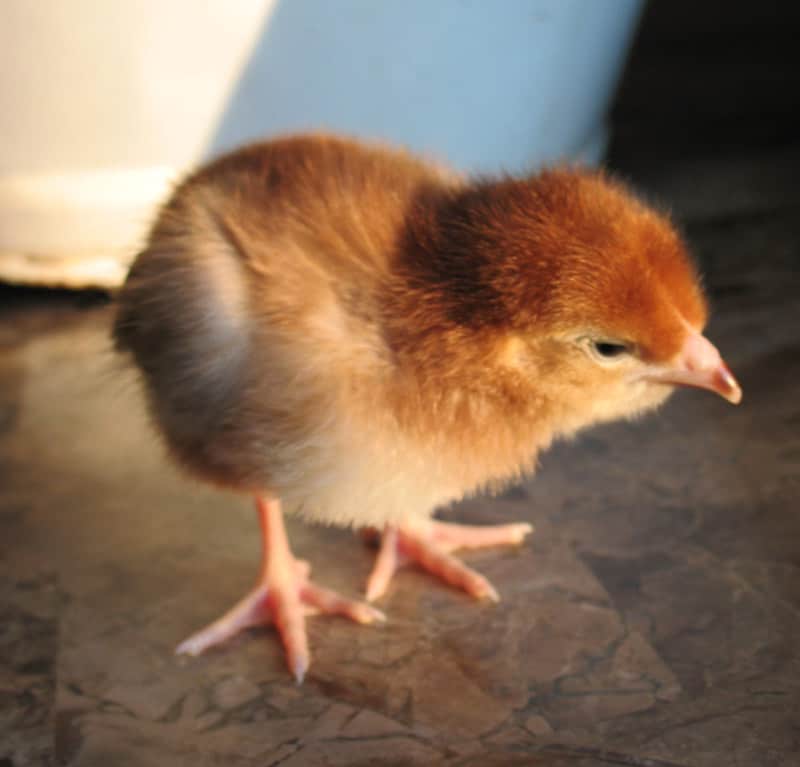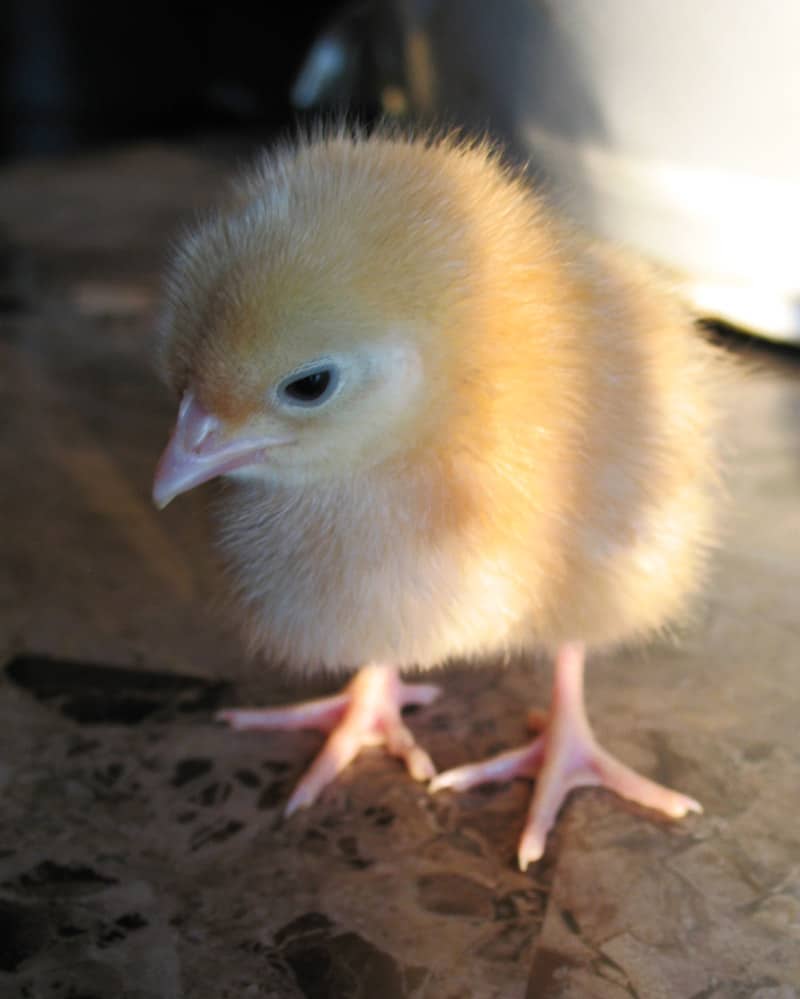My friend Linda’s chicken, Penelope, has been dying to be a mother, so Linda tucked a clutch of fertilized eggs under her. And everyone was happy. Especially Penelope. In fact, Linda said of the expecting mother, “She’s glowing!”
And so the 21-day wait began. Linda kept dutiful watch over mother and soon-to-be chicks. Penelope radiated in her position of keeper of the eggs, but the other hens didn’t like it much. Part of the problem, we think (in hindsight, of course), was due to the fact that Penelope was keeping the favored nesting box occupied for days on end and the other girls in the coop lost their patience waiting for a vacancy. They were merciless to Penelope as she faithfully kept watch over the eggs (this is one of the reasons it’s advised to separate your hen sitting on a clutch of eggs to a different pen).
Then, eggs started disappearing, without a trace as to what happened to them. No yolks, no pieces of shell. Nothing. Penelope started with 9 eggs and ended with four. She didn’t seem to notice, happily perched on her shrinking clutch of eggs. But the count dwindled daily.
Day 21 came. And went. No chicks.
Linda investigated and found two cracked eggs, chicks inside, neither of them alive.
Day 22 came. And went. Linda called the local feed store to see when day-old chicks would be arriving. Friday.
Day 23. Penelope patiently set on her two remaining eggs. Waiting.
Day 24. Linda drove out to the feed store, intent on having baby chicks in the house. She selected six day-old babies and brought them home. She took an old t-shirt and went out to visit Penelope and rubbed it all over her, trying to pick up her scent. (Thankfully, Penelope is a very docile hen so Linda had no trouble accomplishing this!) Next, the new chicks were placed on the mama-scented t-shirt.
I drove over. We waited until dusk, when all the hens put themselves to bed. Then, armed with a box of loudly peeping, cold and unhappy chicks, we crawled into the hen-house. Linda picked up Penelope and snatched the remaining two eggs from her. I stuck the newly smeared-with-mamas-scent chicks under her.
We tip-toed out and waited to hear the verdict. Frantic baby cheeping. Mama cooing. Cheeping slowing. Babies asleep. Mama content. Us happy.
Mission accomplished.
Giving a broody hen some baby chicks is one way to deal with the broodiness when nature calls. It’s often an easier route for urban chicken owner. For one, baby chicks are usually easier to find than fertilized eggs in the city (where roosters are rarely allowed). Also, buying sexed chicks gives you much better odds for ending up with hens (although they say there’s still about a 10% chance, even with sexed chicks, you’ll end up with boys…but that’s better than a 50/50 chance…and my last batch that hatched had FOUR roos and only THREE hens.)
If you decide to give your broody hen a chick or two (or more), make sure that they’re day-old chicks so that they will imprint on your hen and understand that she’s the mommy. Most feed stores get chicks as day-olds, so just find out when their next shipment is due in. (Usually chicks are shipped within 24 hours of hatching. This is because a chick can live for a couple of days on the yolk she ate while in the egg. Shipping chicks immediately removes the hassle of having to deal with food and water to keep your chicks alive.)
Also, listen for signs of distress after you’ve placed the chicks under her. There are times when the hen might not accept the new babies as her own. And watch the rest of the flock. If there are problems, you might need to pull your new family out and let them live somewhere else for a while.
If you get a chance, though, let a hen in your flock have babies at least once. It’s so fun to watch them. It’s worth the extra hassles! You’ll be glad you did it. Really!




